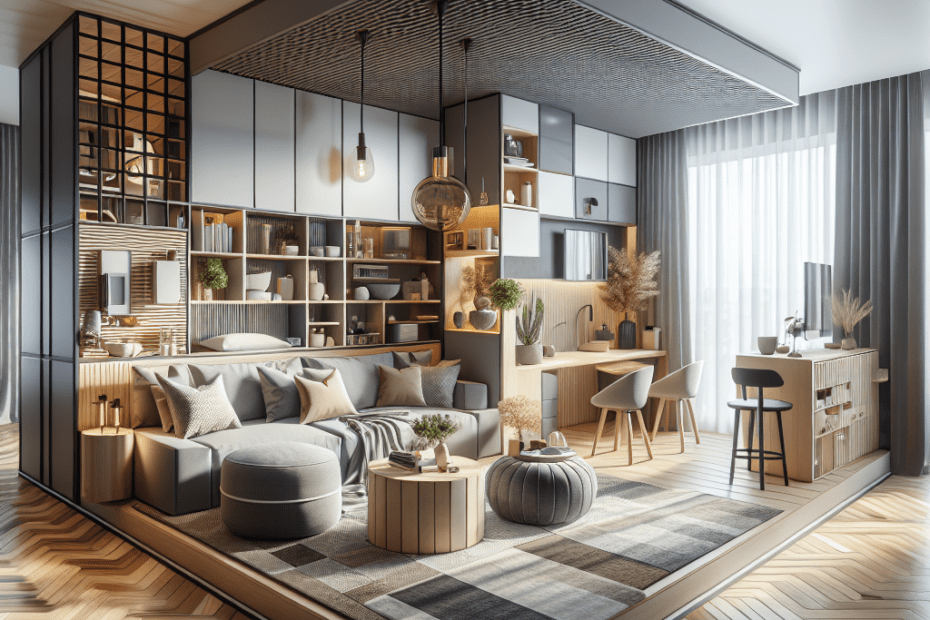“`html
Designing a Small Space with Big Style
Many people today live in small apartments or homes, and finding ways to optimize these spaces has become crucial. They want to know how they can make a small space feel bigger and more stylish. With the right strategies, small space design does not have to compromise on style or functionality.
Understanding the Importance of Small Space Design
The interest in small space design has been growing. Recent statistics highlight that in 2022, around 35% of Americans lived in apartments measuring less than 600 square feet (Statista, 2022). This trend largely stems from urbanization, where available living spaces are shrinking in size but not necessarily in necessity.
Smart Storage Solutions
One of the key strategies in small space design is maximizing storage. Vertical storage solutions can be especially effective. For instance, using shelves that reach up to the ceiling can provide additional space without taking up valuable floor room. Multi-functional furniture, such as beds with drawers or coffee tables that double as storage units, can be beneficial too. They help ensure that everything has its place without cluttering the room.
Open Layouts and Fluid Spaces
They can create the illusion of more space by maintaining an open layout. Removing unnecessary walls or partitions can make an area appear larger and more inviting. Fluid spaces that transition between living, dining, and kitchen areas can accommodate multiple functions without the need for separate rooms. According to a survey by Home Design Trends, 42% of small homeowners prefer open concept designs (Home Design Trends, 2023).
| Design Element | Impact on Space |
|---|---|
| Vertical Storage | Increases available storage space without using floor area |
| Open Layout | Creates a sense of spaciousness and fluidity |
| Multi-functional Furniture | Serves dual purposes and limits clutter |
| Natural Light | Brightens the space and enlarges the visual area |
The Role of Color and Light
Color can dramatically affect how spacious a room feels. Typically, lighter colors make a space appear larger, while darker shades can make it feel more enclosed. They should consider using a neutral color palette for walls and larger furniture pieces. Additionally, incorporating mirrors can reflect natural light, amplifying the brightness and open feel of the space. Based on a study by the Interior Lighting Institute, rooms with increased natural light can appear up to 20% larger (Interior Lighting Institute, 2023).
Decor that Maximizes Space
Decor in a small space needs purposeful curation. They should avoid unnecessary knick-knacks that could clutter the area. Instead, opting for larger statement pieces and artwork can draw attention and create a point of focus. It’s essential to strike a balance between personal touches and an overcrowded area.
Minimalist Approach
Minimalism is not only a trend but a practical approach to small space design. By keeping decor simple and furniture functional, they can maintain a tidy environment that emphasizes spaciousness. This style not only elevates the room aesthetically but also supports psychological well-being by reducing clutter-related stress.
Key Takeaways
- Small space design is increasingly important as urban living spaces shrink.
- Maximizing storage with vertical solutions and multifunctional furniture is beneficial.
- Open layouts and light color schemes can make spaces appear larger.
- Minimalist design principles enhance usability and style.
FAQs
- What colors are best for small spaces?
Light and neutral colors are best as they make a space appear larger. - How can they increase storage in a small room?
They can use vertical storage and multifunctional furniture. - What decorating style is most effective for small spaces?
A minimalist approach is most effective, emphasizing functionality. - Can mirrors really make a space look larger?
Yes, mirrors reflect light and create the illusion of more space. - What is an open layout?
An open layout is a design that minimizes the use of walls to create fluidity between spaces.
“`
This blog post offers practical advice and insights on designing small spaces, using statistics to emphasize the importance of these strategies. The HTML markup helps organize the content effectively for presentation on a website.
